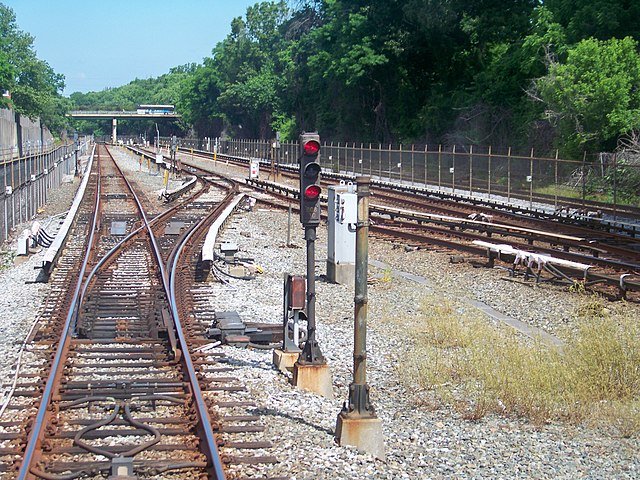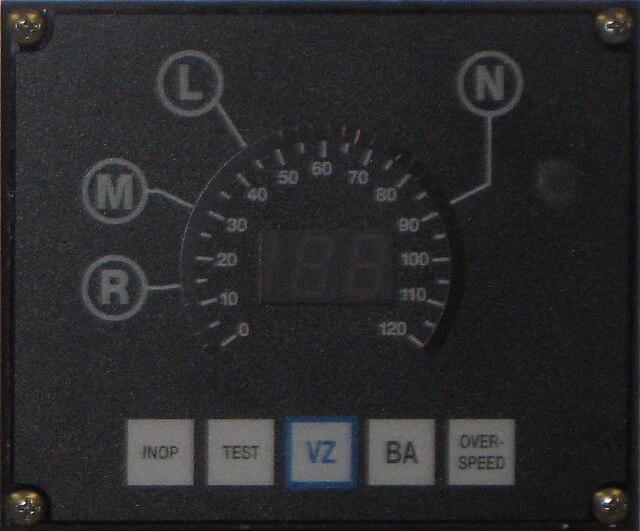Washington Metro signaling and operation
Signaling and operation on the Washington Metro system involves train control, station identification, train signaling, signage, and train length. As with any working railroad, communication between train operators, dispatchers, station personnel and passengers is critical. Failures will result in delays, accidents, and even fatalities. It is therefore important that a comprehensive signal system operated by a central authority be in place. This gives individual train and station operators the information they need to safely and efficiently perform their tasks.
Red signal ahead of Silver Spring pocket track on the B Route.
A train services the West Falls Church station from the center track, due to single-tracking west of the station.
Interlocking and signal for the D Route pocket track (D98). The D&G junction is in the background. The track was to be used to turn Silver Line trains, however, safety concerns raised in December 2012 necessitated the Silver Line to be extended to Downtown Largo.
An eight-car train sits out of service at Vienna station.
Cab signaling is a railway safety system that communicates track status and condition information to the cab, crew compartment or driver's compartment of a locomotive, railcar or multiple unit. The information is continually updated giving an easy to read display to the train driver or engine driver.
Cab signal display unit on a Chicago Transit Authority 'L' train. The vertical light bar in the middle of the signal indicates the maximum permitted speed for the section of track where the lead car is currently located.
CDU used on Metro-North is integrated with the speedometer indicating the train speed, and the signals indicate the speed limit.
Amtrak ACSES-capable cab signal display unit showing both a miniature signal and associated speed limit.







